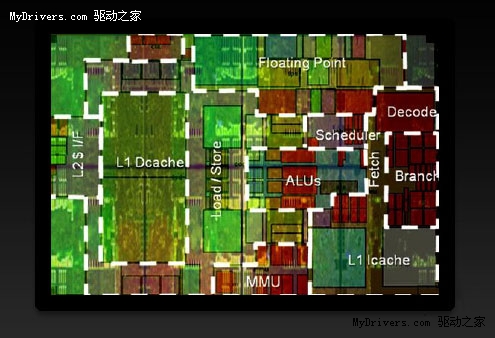 NVIDIA's ARM architecture converged processor project "Project Denver" has been announced for a long time, but the specific specifications have always been a mystery, until now finally revealed some clues.
NVIDIA's ARM architecture converged processor project "Project Denver" has been announced for a long time, but the specific specifications have always been a mystery, until now finally revealed some clues. The Denver processor design is being synchronized with the Tegra family. The third-generation Kal-El Tegra 3 is scheduled to be released later this year, while the fourth-generation Wayne Tegra 4 is expected to be streamed in the next two weeks or so, and the first prototype chips will be available to developers in December. According to rumors, the first Tegra 4 version will have four ARM processor cores (unknown architecture) and at least 24 stream processors, and the second version will increase to eight and 32-64, respectively.
Also in December of this year, the Denver processor will be finished for the first time, using the TSMC 28nm process. It will have up to eight NVIDIA self-developed ARM 64-bit architecture processor cores, as well as a GeForce 600-level graphics core. The latter does not mean that NVIDIA will integrate the new Kepler graphics architecture into the Denver processor, but it will be a process-improved version of the existing Fermi architecture.
At the same time, there are rumors that the 28nm GeForce 600 series will appear on laptops and on low-end desktops – does this mean that the Kepler family will become the GeForce 700 series?
Back to the Denver processor, another source said that its GPU graphics core will have "at least 256 CUDA cores (stream processors)", which is comparable to AMD's next-generation Trident APU with a bulldozer processor and VLIW4 GPU architecture. .
In terms of computing performance, NVIDIA will not set the frequency of the Denver processor very high. One is to control the power consumption, and the other is that NVIDIA prefers to increase the IPC (instructions per clock cycle) to the extreme. It is expected that the processor frequency in Denver will be around 2.0-2.5 GHz and the GPUs will be similar.
In terms of internal interconnect design, the Denver processor does not connect CPUs and GPUs to memory controllers at the speed of DDR3 like AMD APUs. Instead, it uses a more direct and faster method, especially with the help of GPUs. Provides high bandwidth. NVIDIA will not use traditional primary, secondary and tertiary caches because the bandwidth between the GPU and its cache can exceed 1TB/s, which the Denver core will learn.
In Denver, the memory controller will occupy a large part and be responsible for connecting the CUDA core with the CPU core. The CPU has higher priority in accessing the required bandwidth, but only needs 10-20% of the total bandwidth, and the rest is given to the GPU.
The design of notebooks, desktops, and server motherboards that are compatible with Denver processors is also underway. Three high-speed transmission standards, including PCI-E 3.0, USB 3.0, and SATA 6Gbps, will be on the list. Tegra 3/4 is responsible for smartphones, tablets, and ultra-thin notebooks. The Denver processor will enter mainstream notebooks, desktops, and servers. In particular, the last one will get Tesla's accelerated computing card out of reliance on x86 and partner with its own processing. Device.
Speaker Box Co., Ltd. , http://www.nsspeaker.com